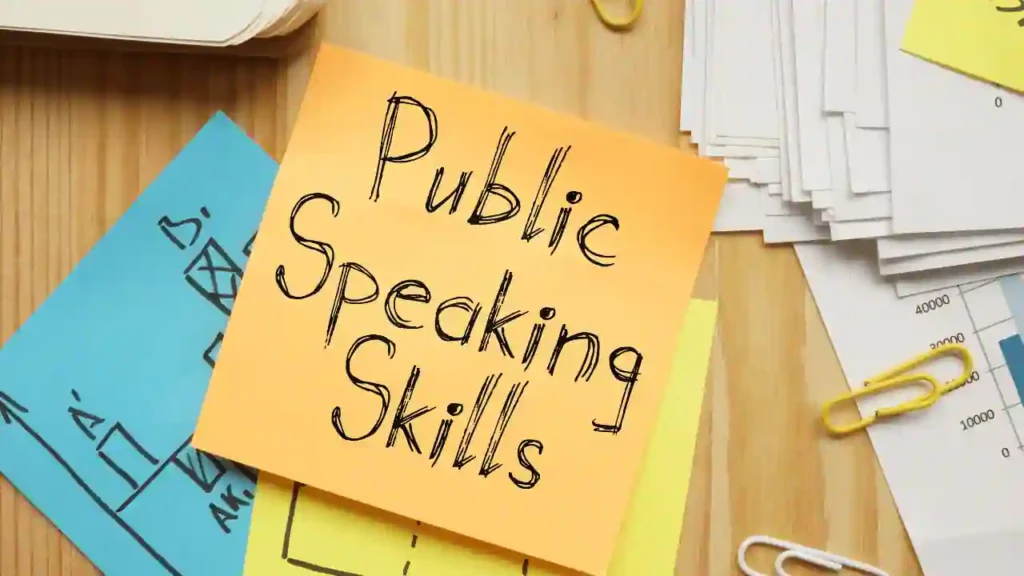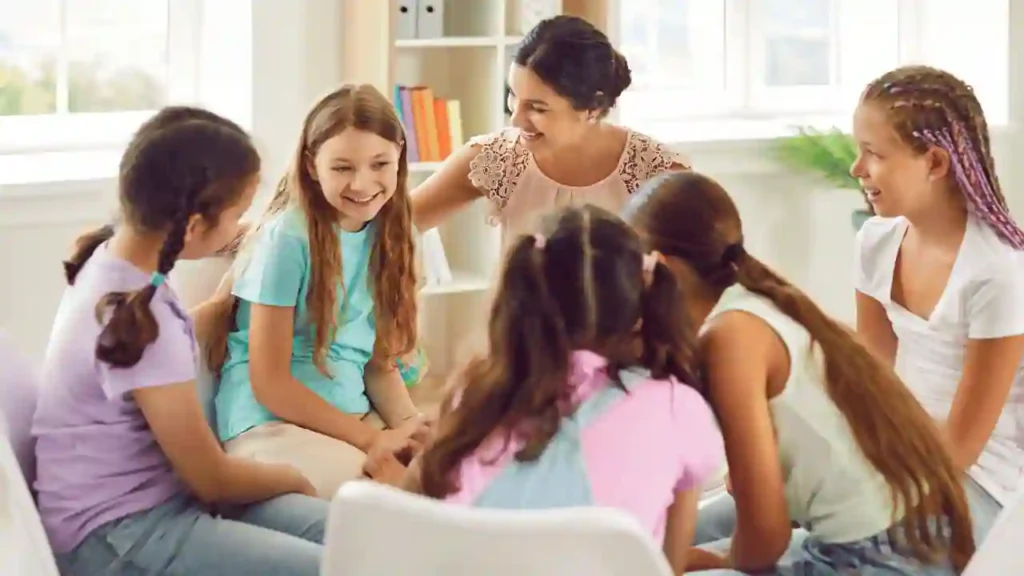In today’s dynamic world, effective communication is more crucial than ever. Whether it’s expressing ideas, persuading others, or simply connecting with people, the ability to speak confidently in public is a valuable skill. And what better time to start honing this skill than in childhood? Public speaking activities for kids not only foster confidence but also nurture crucial communication skills that will serve them well throughout their lives.

The Importance of Public Speaking for Kids
Public speaking is not just about delivering speeches to large audiences; it encompasses everyday interactions, from participating in class discussions to presenting ideas in group settings. For children, developing proficiency in public speaking offers numerous benefits:
- Confidence Boost: Public speaking activities provide a platform for children to express themselves, boosting their self-confidence and self-esteem.
- Communication Skills: Effective public speaking requires clear articulation, organization of thoughts, and active listening – all essential components of communication.
- Critical Thinking: Crafting and delivering speeches encourage children to think critically, analyze information, and form coherent arguments.
- Empathy and Connection: Understanding the audience’s perspective and adapting communication accordingly fosters empathy and strengthens interpersonal relationships.
- Leadership Development: Public speaking lays the groundwork for leadership skills, as confident communicators are often seen as natural leaders.
Engaging Public Speaking Activities for Kids
- Show and Tell: A classic activity that encourages children to speak in front of their peers. Each child can bring in an item from home and talk about why it is special to them. This activity helps build confidence and improves storytelling skills.
- Storytelling Sessions: Storytelling is a powerful tool for communication. Organize storytelling sessions where children can take turns narrating their favorite stories or creating their own. This fosters creativity, language development, and confidence in expression.
- Debate Club: Introduce structured debates on age-appropriate topics. Divide children into teams and assign roles such as speakers, researchers, and moderators. Debating enhances critical thinking, argumentation skills, and the ability to see multiple perspectives.
- Speech Writing Workshops: Teach children the art of crafting compelling speeches. Guide them through the process of brainstorming ideas, organizing content, and delivering speeches with confidence. Encourage them to speak on topics they are passionate about, fostering authenticity and engagement.
- Impromptu Speaking Challenges: Spontaneity is key in effective communication. Organize impromptu speaking challenges where children are given a topic on the spot and asked to speak for a short duration. This activity hones quick thinking, adaptability, and fluency in expression.
- Role-Playing Exercises: Engage children in role-playing scenarios where they take on different personas and interact with each other. This helps develop empathy, perspective-taking, and improvisational skills, essential for effective communication in various contexts.
- Public Speaking Contests: Organize friendly public speaking contests within schools or communities. Provide opportunities for children to showcase their skills in front of larger audiences. Such contests not only motivate participants but also celebrate their achievements.
Tips for Facilitating Public Speaking Activities
- Create a Supportive Environment: Foster a safe and supportive atmosphere where children feel encouraged to take risks and express themselves without fear of judgment.
- Provide Constructive Feedback: Offer constructive feedback that focuses on strengths and areas for improvement. Encourage children to learn from both successes and challenges.
- Lead by Example: Model effective public speaking by demonstrating good communication practices yourself. Show children the power of clarity, confidence, and empathy in speech.
- Encourage Practice: Like any skill, public speaking improves with practice. Encourage children to practice regularly, whether it’s rehearsing speeches, participating in discussions, or engaging in storytelling.
- Celebrate Progress: Celebrate milestones and progress, no matter how small. Recognize and applaud children’s efforts to boost their confidence and motivation.

Best Topics for a 2-minute Public Speech for Kids
Engaging in Public Speaking Activities for Kids involves selecting topics that are both captivating and suitable for their age group. Here are some ideas:
- My Favorite Hobby: Public Speaking Activities for Kids can involve delving into the world of their favorite hobby, whether it’s playing soccer, painting, or playing the piano. By sharing anecdotes about memorable experiences related to their hobby, such as winning a game or creating a masterpiece, they can inspire others to pursue their passions.
- My Pet: During Public Speaking Activities for Kids, children can paint a vivid picture of their furry, scaly, or feathery friend, describing their pet’s appearance, personality, and quirks. Sharing heartwarming stories about the special bond they share with their pet can captivate their audience and spread happiness.
- A Funny Story: Laughter is contagious, and during Public Speaking Activities for Kids, children can spread smiles by sharing a funny story or joke that tickles their funny bone. Whether it’s a hilarious mishap at school or a comical family anecdote, they can showcase their storytelling skills and create a memorable and enjoyable speech experience.
- Why Reading is Important: Kids can champion the magic of books and the transformative power of reading during Public Speaking Activities for Kids. By discussing the joys of getting lost in a captivating story and exploring new worlds, they can ignite a passion for reading in others and emphasize its importance for academic success.
- My Dream Vacation: Public Speaking Activities for Kids can involve taking a virtual journey to their dream vacation destination. By describing the sights, sounds, and experiences they envision, they can inspire others to explore the world and create unforgettable memories.
- How to Make a PB&J Sandwich: Children can become culinary master chefs during Public Speaking Activities for Kids by giving a demonstration of how to make the ultimate peanut butter and jelly sandwich. By making the process fun and interactive, they can teach valuable life skills and showcase their ability to communicate clearly and effectively.
- The Importance of Friendship: Kids can celebrate the power of friendship during Public Speaking Activities for Kids. By discussing the qualities of a good friend and sharing heartwarming stories about the special friends in their lives, they can foster a sense of belonging and community among their peers.
- My Superhero: During Public Speaking Activities for Kids, children can unleash their imagination and introduce their favorite superhero to the world. By highlighting the qualities they admire, such as courage and compassion, they can inspire others to be heroes in their own lives.
- The Benefits of Exercise: Children can champion the importance of staying active and living a healthy lifestyle during Public Speaking Activities for Kids. By discussing the physical and mental benefits of exercise and sharing their favorite ways to stay active, they can motivate others to prioritize their well-being.
- How to Plant a Seed: Kids can embark on a green-fingered adventure during Public Speaking Activities for Kids by demonstrating the magic of gardening. By explaining the steps involved in planting a seed and watching it grow, they can inspire others to connect with nature and cultivate their own green thumb.
These topics provide kids with a platform to share their passions, stories, and insights during Public Speaking Activities for Kids, captivating their audience and making a positive impact through their public speaking skills.
How to Calm Anxiety for Public Speaking
Calming anxiety for public speaking during Public Speaking Activities for Kids involves both mental and physical strategies. Here are some techniques that can help:
1. Prepare Thoroughly: The more prepared kids are, the more confident they’ll feel during their public speaking activities. Practice speeches or presentations multiple times until they feel comfortable with the material.
2. Visualize Success: Encourage kids to close their eyes and imagine themselves giving a successful presentation during their public speaking activities. Visualizing the audience responding positively and applauding at the end can help boost their confidence and reduce anxiety.
3. Deep Breathing: Teach kids to practice deep breathing exercises to calm their nerves before and during public speaking activities. Instruct them to take slow, deep breaths in through their noses, hold for a few seconds, and then exhale slowly through their mouths. Repeat this several times to help relax their bodies and minds.
4. Progressive Muscle Relaxation: Guide kids through a progressive muscle relaxation exercise, where they tense and then relax each muscle group in their bodies. Starting from their toes and working their way up to their heads, this technique can help release physical tension and promote relaxation during public speaking activities.
5. Positive Affirmations: Encourage kids to repeat positive affirmations to themselves before and during their public speaking activities. Remind them that they are prepared, confident, and capable of delivering great speeches.
6. Focus on the Message, Not the Audience: Shift kids’ focus away from worrying about how the audience perceives them and encourage them to concentrate on delivering their messages effectively during public speaking activities. Remind them that they have valuable information to share, and the audience is interested in hearing it.
7. Use Visualization Techniques: Help kids visualize the audience as friends or colleagues who are supportive and interested in what they have to say during their public speaking activities. This can make the situation feel more comfortable and less intimidating for them.
8. Start Strong: Encourage kids to begin their presentations with a confident opening, such as a compelling story, interesting fact, or thought-provoking question. Starting strong can help set a positive tone and boost their confidence for the rest of their public speaking activities.
9. Practice Mindfulness: Introduce kids to mindfulness techniques, such as meditation or mindfulness exercises, to help them stay present and focused during their public speaking activities. This can reduce anxiety and promote a sense of calmness.
10. Seek Support: Let kids know that it’s normal to feel nervous before public speaking and encourage them to seek support from a supportive friend, family member, or colleague. Simply expressing their feelings can help alleviate some of the pressure they’re feeling during their public speaking activities.
Public speaking is a skill that empowers children to express themselves confidently, connect with others, and navigate the complexities of the world around them. By incorporating engaging public speaking activities into their learning journey, educators and parents can equip children with the communication skills they need to succeed in school, relationships, and future careers. So, let’s encourage our young speakers to find their voices, unlock their potential, and shine on the stage of life.
